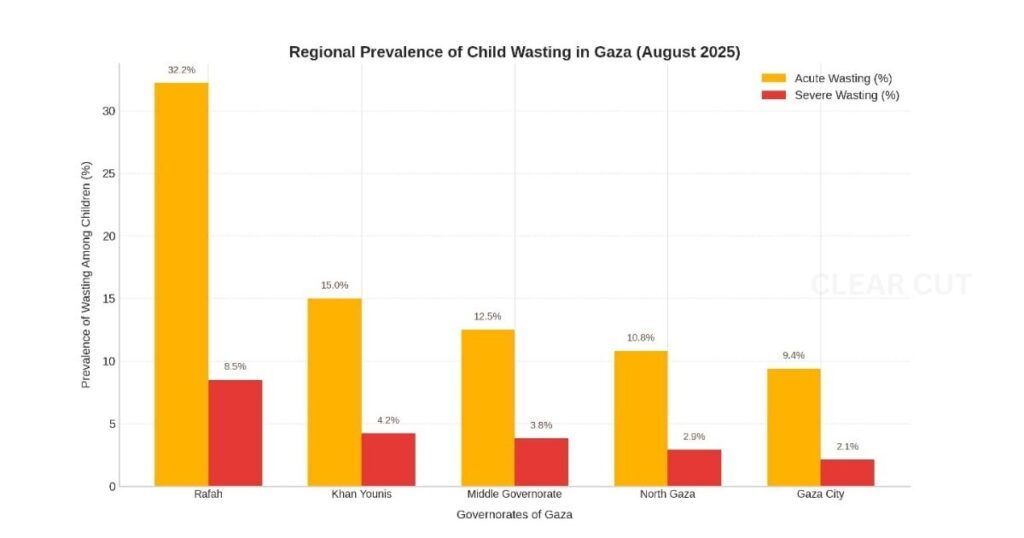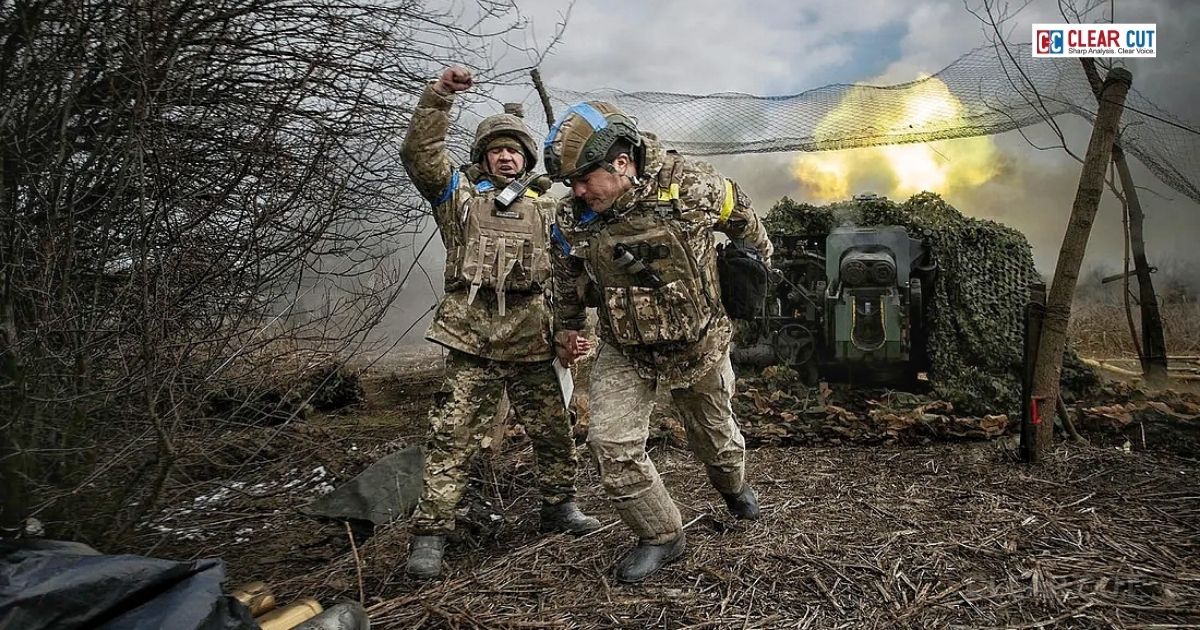Photo Credit: Janmojaya Barik
Clear Cut Research Desk
New Delhi, UPDATED: Oct 10, 2025 02:10 IST
Written By: Janmojaya Barik
A new study published in The Lancet offers one of the most detailed and distressing accounts yet of how the Gaza war has affected children’s health. Led by Dr. Samir Abu Hamad and colleagues from the UN Relief and Works Agency for Palestine Refugees in the Near East (UNRWA), the research documents a dramatic rise in acute malnutrition among children aged six months to five years.
In wars, much is visible: the noise, the destruction, the smoke. But some tragedies happen quietly. They do not scream for attention. They unfold slowly, in small bodies that grow weaker every day.
A new report recently published in The Lancet has brought the world’s focus on that silent suffering. From January 2024 until August 2025, it was carried out, and it chronicles the extent of wasting malnutrition among children in the Gaza Strip who are Palestinian. It uncovers a tragic reality. Following nearly two years of war and months of severe restrictions on humanitarian assistance, tens of thousands of children under five are malnourished and struggling to survive.
Measuring the Unthinkable
The research was led by the UN Relief and Works Agency for Palestine Refugees in the Near East, or UNRWA. It utilized 16 health centers and 78 medical points distributed throughout Gaza’s five governorates. These were set up in school shelters and tent encampments, where displaced families have been trying to survive.
Health workers took measurements of the mid-upper arm circumference of children aged 6 to 59 months. Overall, they made 265,974 measurements for 219,783 children. A simple colored tape was wrapped around each child’s arm. Green for safe, yellow for undernourished, and red for danger. The ones who were in the red category were registered for therapeutic feeding.
This little tape served as a silent witness to the starvation of a generation.

The Numbers Behind the Crisis
Throughout January and June 2024, acute wasting stood at between 5 and 7 percent. There followed a phase of hardline restrictions on aid deliveries, from September 2024 to January 2025. Over these four months, things worsened quickly.
Acute wasting increased from 8.8 percent to 14.3 percent. Severe wasting, the most lethal type of malnutrition, likewise increased dramatically. Rafah bore the brunt with nearly one-third of the children screened being acutely wasted. Children aged 24 to 59 months were the most susceptible, with one in every five suffering from wasting.
Following a short-lived ceasefire and greater humanitarian access early in 2025, the situation stabilized. By March, the acute wasting rate dropped to 5.5 percent. But the good times were not to last. An 11-week blockade from March to May 2025 cut food, medicine, and fuel imports again.
As of August 2025, 15.8 percent of the children screened were acutely wasted, and 3.7 percent were severely wasted. Which is to say over 54,600 children required immediate therapeutic treatment.
Standing behind the percentages are children who cannot stand, mothers who do not eat, and families who live off a single slice of bread.
Hunger as a Humanitarian Alarm
Wasting is the most life-threatening type of malnutrition. Once it’s severe, a child’s immune system becomes compromised, and even regular infections can be fatal. Wasting can result in permanent harm or death if left untreated immediately.
The authors of the study name the crisis as preventable and purely man-made. According to them, hunger in Gaza isn’t a product of drought or natural shortage, but rather extended conflict and access constraints.
The connection between access to aid and survival is agonizingly obvious. During the brief ceasefire of early 2025, when scores of trucks filled with food and medicine entered Gaza, malnutrition rates fell rapidly. The moment access is cut off again, the rates rose.
It is a reminder that each truck which fails to cross into the territory could be another child falling into severe hunger.
What These Numbers Tell the World
This research is not merely a scientific report. It is a moral report. It confirms that hunger is not merely a consequence of war but an instrument used to intensify distress.
The report also calls the international community into action. They remind us humanitarian access is neither charity nor benevolence but a legal and ethical requirement. Every child is entitled to food, clean water, and protection.
Malnutrition on this scale can be cured only with medical treatment. It needs to be protected from humanitarian corridors, borders reopened, and a collective commitment of the international community to avoid more starvation.
The Call for Humanity
The authors conclude their report with a stark warning. After almost two years of conflict and limited aid, tens of thousands of young children suffer from acute malnutrition and are at greater risk of death. The term “preventable” jumps out. It implies that the crisis can be stopped if the world chooses to act.
Science has quantified the loss. All that is left is a test of conscience. If compassion still exists in the world, then food and medicine must find their way to every child who needs it. Hunger is not a necessity. It is a decision of those who turn away.




